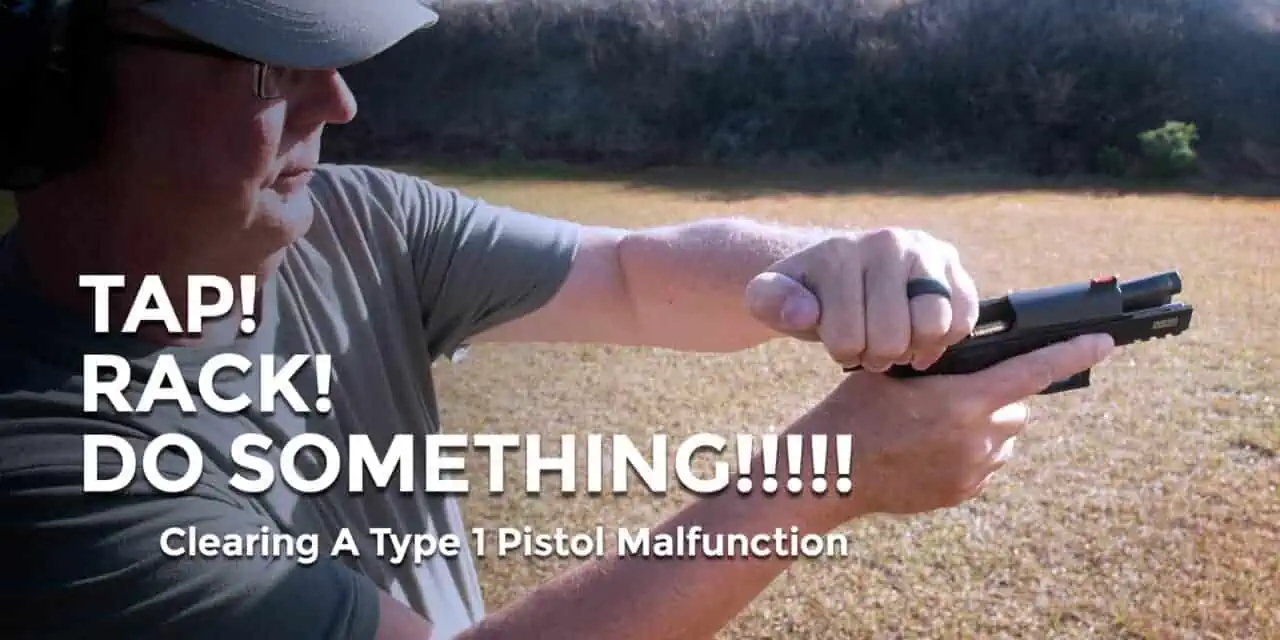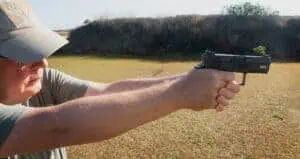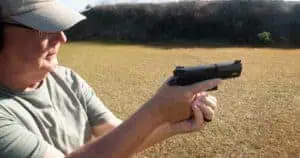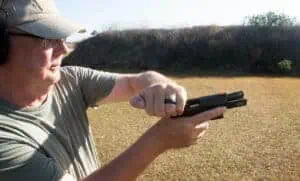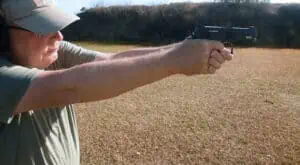Clearing A Type 1 Malfunction With A Tap Rack Bang Drill
Someone once said that the loudest sound in a gunfight is a click when there should have been a bang. Having your gun malfunction on the range and go “click” when it should have gone “bang” is an inconvenience, and a malfunction in a shooting match means you might lose the match. A malfunction in a gunfight, however, means you might lose something much more valuable. This is why knowing how to quickly diagnose and clear a malfunction is an essential part of learning to be a better marksman.
Tap Rap Bang – For When Bang Doesn’t Happen When It Should
At their heart, guns are a mechanical device. The falling of a hammer, the movement of the firing pin, the ejection of the spent casing and loading of a new round are all mechanically based. As mechanical objects, they can wear down through use and break or suffer malfunctions. Over the next few weeks, we’ll take a look at how to deal with three different types of pistol malfunctions. The first malfunction we’ll look at is the failure to extract, or tap rack bang drill.
- A failure to extract, or Type 1 malfunction happens for one of two reasons:
- There is a round or a spent casing in the chamber, and the gun has not attempted to remove it from the chamber.
- There isn’t a round in the chamber, and you need to get one in there right quickly.
Identifying the problem is a crucial part of clearing a failure to extract and performing a tap rack bang drill. If you press the trigger on your pistol and nothing happens, you might be dealing with either an empty pistol with no magazine in it, a pistol with an improperly seated magazine, or a pistol that has fired, but has not extracted the round. Look at your gun: If the slide is closed, it’s probably time for a tap rack bang drill.
Clearing A Type 1 Malfunction
The procedure to clear these issues in a semi-automatic pistol is commonly known as a tap rack bang drill because those are the motions you perform to clear the malfunction.
- Firmly tap the base of the magazine in the pistol to make sure it is seated correctly
- Rack the slide to eject whatever is inside the chamber and/or load a new round from the magazine into the chamber
- Shoot… or not. This is the “Bang” part of “tap rack bang,” and it’s an optional step. For instance, if you’re in a two way gunfight and your attacker is still sending rounds your way, then “bang” is probably a good idea. However, if your opponent ceases to be a threat as you perform this drill, sending another round his way is probably a bad idea. This is why some instructors call this drill “tap rack assess” versus “tap rack bang.”
Hitting the base of the magazine in step one serves two functions. It ensures that you actually have a magazine in your gun (which happens more often than you might think). Firmly tapping on the magazine also makes sure your magazine is locked in place and can feed rounds into the gun. If that’s not the case, your pistol will shoot once, and then not shoot again, which is one way to have a type 1 malfunction.
Rack It Up
The second step, racking the slide, also serves two purposes. If you need to perform a tap rack bang because the magazine wasn’t locked into your gun, racking the slide loads a round into the chamber and you’re ready to move on. If your gun malfunctioned because the spent casing from your last shot wasn’t extracted from the chamber and ejected from the gun, racking the slide clears it out and loads a fresh round from your (properly seated) magazine.
Bang, the last step, depends on the context of what’s going on around you. If you’re on the range shooting a drill or competing a shooting match, you need to make up for lost time in either a drill or a course of fire in a match, then by all means, make that last step “Bang” and move on to the next step.
Doesn’t Always End With A Bang
If, however, you unfortunately find yourself defending a life with your defensive pistol and you need to perform a tap, rang, bang, you may want to make that last part of the drill something other than bang. If your attacker is down and out of the fight, sending more rounds their way could be considered excessive force, which then could lead to a world of more legal hassles and even more problems.
Looking over these steps, it becomes clear that this is a drill that’s only useful for semi-automatic guns which feed rounds into the chamber via a magazine. If you run into these issues while using a revolver, skip all of these steps and just pull the trigger again. The cylinder will turn, and a fresh round will be ready for firing.
Knowing what to do when your gun doesn’t do what it’s supposed to is one of the biggest differences between an experienced gun owner and someone who likes shooting, but doesn’t know how to handle unusual situations. Practicing the tap, rack (and possibly) bang drill at home (without the “bang” part) during dry fire improves your familiarity with your firearm of choice and your gun handling skills. On top of this, knowing that you can quickly correct a malfunction when it happens increases your confidence in your marksmanship and your ability to deliver the shot on-demand. And if that’s not making the best out of a bad situation, what is?

